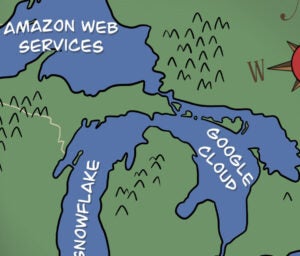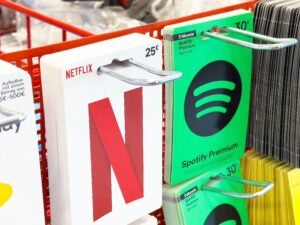 “On TV And Video” is a column exploring opportunities and challenges in programmatic TV and video.
“On TV And Video” is a column exploring opportunities and challenges in programmatic TV and video.
Today’s column is written by Vincent Cacace, founder and CEO at Vertebrae.io.
Brands want to know their ads are being seen, by how many real humans, and how those ads help sell their products. But beyond those basics, there’s still plenty of disagreement over how best to measure and evaluate success.
With the arrival of virtual reality (VR), augmented reality (AR), 360 video and other forms of powerfully immersive advanced-content experiences, those debates are spilling into new frontiers of relevancy, engagement and brand extension.
The question about which metrics matter is only going to get more complicated in the VR era. Advertisers can measure the entire VR content experience. We need to think about what counts and why, especially as this sector evolves toward a sustainable, long-term business partly financed by advertising.
One key in developing metrics for the new sector is for publishers and creators to remember the real audience in this specific conversation: the brands and media buyers paying for those ads on their sites. The end-user audience matters, of course, but this discussion is about how best to measure how they interact with what brands are creating and the messages being shared with them.
Brands and media buyers need a frame of reference for their buying decisions, and building on the familiar provides that. One of the most basic measures in video advertising is the impression.
What counts as a video impression in more “traditional” digital media? Even in the 2-D video universe, agreement can be hard to come by. Facebook counts a “view” as three seconds of autoplaying run time with no audio. The IAB’s definition calls for two seconds of viewing, with at least 50% of the ad visible on screen. YouTube views are a different beast altogether.
In VR environments, however, an impression can be so much more. The basics will feel quite familiar to industry veterans, such as whether a consumer looked at an ad and for how long.
But then it gets more complicated. With VR, it is helpful to know how long a user was in the scene where an ad was showing. The distance between the ad and user also comes into play since size, scale and distance matter in what is a VR version of the viewability issue.
Then there is also the question of whether a user was looking at an ad while they were in the scene, or were they looking somewhere else?
AdExchanger Daily
Get our editors’ roundup delivered to your inbox every weekday.
Daily Roundup
Did they “gaze through” or select the ad to enter a deeper interactive experience, and how long did they stay? What did they look at while they were in the pop-out experience? What did they do while they were in the ad experience?
Where was their gaze directed, and for how long on each part of that experience? Gazing at a brand experience or object for an extended period is a new kind of impression, one that really shows viewer engagement.
What new forms of user testing will emerge? How do you measure sentiment using physical and, eventually, biometric data? Or given two versions of the same product, which features or colors did users gravitate toward first?
These basic questions suggest that we’re already far beyond the basic 2-D video ad impression. Some of the new metrics will be defined by the platform providing the experience, just as Facebook and YouTube have created their respective platform-specific definitions of a view or impression in the 2-D world. Others will be defined by industry groups, such as the IAB.
But it’s clear that more dimensions of experience and engagement mean more dimensions of metrics to capture all that VR, AR and 360 video advertising can do for brands. Now is the time to begin discussing these issues so we can build a strong sector that allows everyone to thrive.
Follow Vertebrae (@vertebraeinc) and AdExchanger (@adexchanger) on Twitter.













